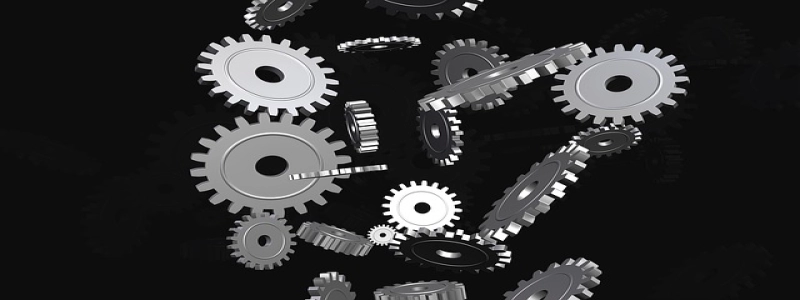Amphenol Ethernet Connector
I. Introduction
A. Overview of Ethernet Connectors
B. Importance of Ethernet Connectors
II. Types of Amphenol Ethernet Connectors
A. RJ45 Connectors
1. Features and Specifications
2. Application Areas
B. Fiber Optic Connectors
1. Features and Specifications
2. Application Areas
III. Benefits of Amphenol Ethernet Connectors
A. High Performance
B. Durability and Reliability
C. Easy Installation
D. Versatility
IV. How to Choose the Right Amphenol Ethernet Connector?
A. Consideration of Application Type
B. Compatibility with Network Devices
C. Bandwidth and Transmission Speed
D. Environmental Factors
V. Installation Process of Amphenol Ethernet Connectors
A. Tools Required
B. Step-by-Step Guide
VI. Troubleshooting Common Issues with Amphenol Ethernet Connectors
A. Loose or Damaged Connections
B. Slow Transmission Speed
C. Compatibility Issues
VII. Conclusion
I. Introduction
Ethernet connectors play a crucial role in establishing reliable and high-speed network connections. Among the various manufacturers, Amphenol is a renowned brand that offers a wide range of Ethernet connectors. These connectors are essential for connecting devices to Ethernet cables and ensuring seamless data transmission. This article will provide a comprehensive breakdown of Amphenol Ethernet connectors, their types, benefits, choosing the right connector, installation process, and troubleshooting common issues.
II. Types of Amphenol Ethernet Connectors
A. RJ45 Connectors
RJ45 connectors are the most common type of Ethernet connectors used in both residential and commercial environments. They feature eight pins and are suitable for connecting Ethernet cables to network devices. Amphenol RJ45 connectors are built with high-quality materials, providing excellent conductivity and signal integrity. These connectors are widely used in various applications, including computer networking, telecommunications, and data centers.
B. Fiber Optic Connectors
Fiber optic connectors are designed for high-speed data transmission over long distances. Amphenol offers fiber optic connectors that are compatible with single mode and multimode fibers. These connectors provide low insertion loss and excellent signal quality, making them ideal for applications that require high bandwidth and long-distance data transfer. They are commonly used in industries such as telecommunication, broadcasting, and military.
III. Benefits of Amphenol Ethernet Connectors
Amphenol Ethernet connectors offer several advantages, making them a preferred choice for network installations.
A. High Performance
Amphenol connectors are engineered to provide optimal performance, ensuring reliable and high-speed data transmission. They are designed to minimize signal loss and interference, resulting in consistent and stable network connections.
B. Durability and Reliability
Amphenol Ethernet connectors are built to withstand harsh environments and heavy usage. They are made from high-quality materials that offer durability and resistance to wear and tear. These connectors can handle frequent plugging and unplugging without compromising their performance.
C. Easy Installation
Amphenol connectors are designed for easy installation, making them suitable for both professionals and DIY enthusiasts. They have user-friendly features such as color-coded connectors and easy-to-follow instructions, simplifying the installation process.
D. Versatility
Amphenol offers a wide range of Ethernet connectors, catering to different application requirements. Whether it’s for residential networking or industrial applications, Amphenol connectors can accommodate various network setups and configurations.
IV. How to Choose the Right Amphenol Ethernet Connector?
Choosing the right Amphenol Ethernet connector is crucial to ensure compatibility and optimal performance. Consider the following factors when selecting a connector:
A. Consideration of Application Type
Identify the specific application for which the connector will be used. Determine whether it is for residential, commercial, or industrial purposes. This will help in selecting the appropriate connector type and specifications.
B. Compatibility with Network Devices
Ensure that the chosen connector is compatible with the network devices being used. Check the specifications of both the connector and the devices to ensure a proper connection.
C. Bandwidth and Transmission Speed
Consider the required bandwidth and transmission speed of the network. Select a connector that can support the desired data transfer rate without any performance issues.
D. Environmental Factors
Take into account the environmental conditions where the connector will be installed. Factors such as temperature, humidity, and exposure to dust or moisture can affect the connector’s performance. Choose a connector that is designed to withstand the specific environmental conditions.
V. Installation Process of Amphenol Ethernet Connectors
A. Tools Required
To install an Amphenol Ethernet connector, you will need the following tools: Ethernet cable, wire cutter/stripper, crimping tool, and a connector termination tool.
B. Step-by-Step Guide
1. Begin by preparing the Ethernet cable. Use the wire cutter/stripper to strip the outer jacket of the cable, revealing the individual twisted pairs of wires.
2. Separate and straighten the twisted pairs and align them according to the T568A or T568B wiring scheme.
3. Trim the excess wires and ensure that each wire is flush with the connector.
4. Insert the wires into the connector, making sure they are in the correct order as per the wiring scheme.
5. Use the crimping tool to secure the wires in the connector by pressing down firmly.
6. Finally, use the connector termination tool to ensure a secure connection between the cable and the connector.
VI. Troubleshooting Common Issues with Amphenol Ethernet Connectors
Despite their reliability, Amphenol Ethernet connectors may encounter certain issues. Here are some common problems and troubleshooting steps:
A. Loose or Damaged Connections
If the connector feels loose or the connection is intermittent, check for any bent or damaged pins. Ensure that the pins are properly aligned with the corresponding slots. If necessary, replace the connector with a new one.
B. Slow Transmission Speed
Slow transmission speed can be caused by cable length limitations, network congestion, or faulty connectors. Troubleshoot the issue by testing the network with a different cable and eliminating any network congestion or bandwidth limitations.
C. Compatibility Issues
If the connector is not providing a stable connection or is not recognized by the network devices, verify the compatibility of the connector with the devices and the network standards being used.
VII. Conclusion
Amphenol Ethernet connectors are reliable and high-performance solutions for establishing network connections. With their various types, benefits, and easy installation process, Amphenol provides a comprehensive range of connectors suitable for different applications. By considering the specific requirements and following the installation guidelines, users can effectively utilize Amphenol Ethernet connectors to ensure efficient data transmission.








